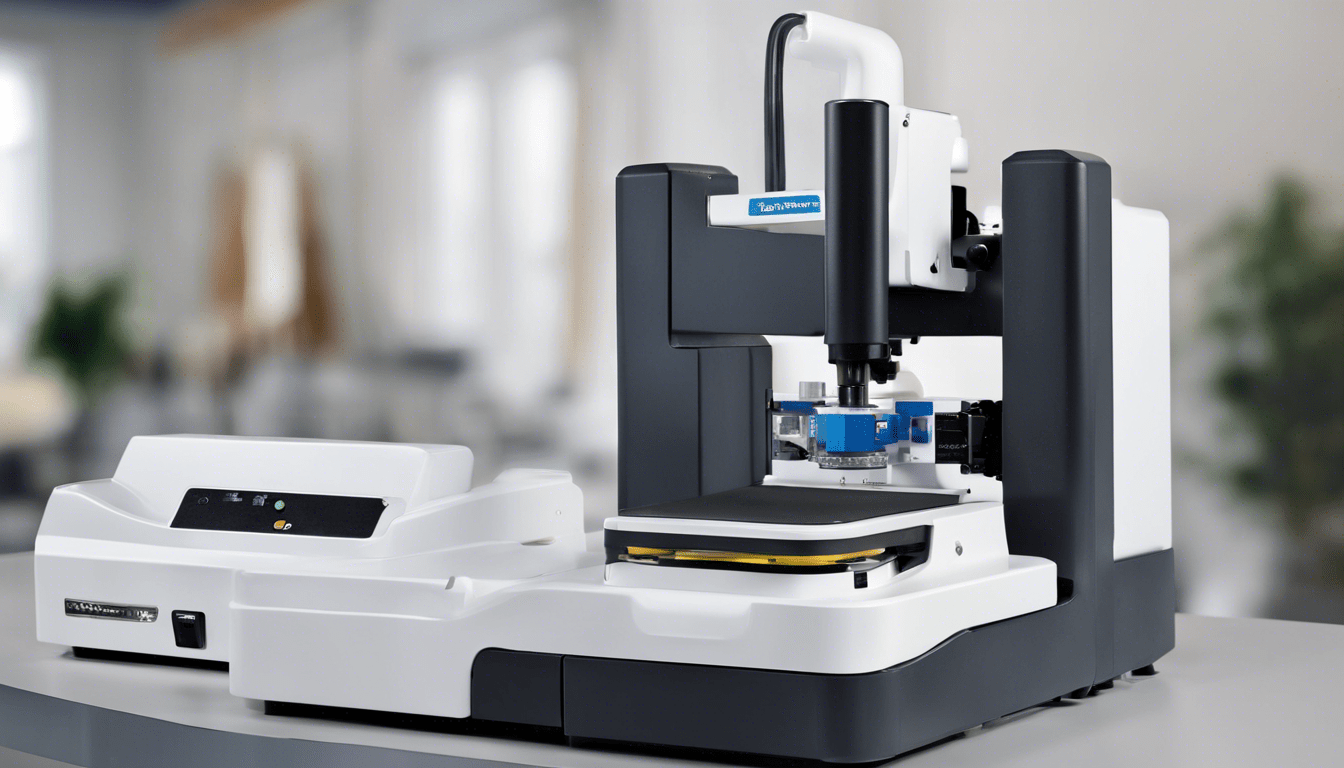Automatic lens edgers are not just tools; they can revolutionize your optical business. By enhancing efficiency, precision, and cost savings, these machines elevate operations to new heights. Embracing the features of top-rated models leads to smoother workflows and satisfied customers. This guide dives into key benefits, essential features, and insights on how these edgers can optimize your services. Discover the transformative impact automatic lens edgers can have and what to consider before making a purchase.
Benefits of Using Automatic Lens Edgers
Automatic lens edgers offer substantial benefits to businesses in the eyewear industry, particularly by enhancing precision and boosting efficiency. These machines are vital for optical businesses aiming to streamline their workflow and reduce manual intervention.
In the same genre : Boost your google rankings using a top new york seo firm
One of the primary advantages is the improved efficiency they bring to lens cutting and shaping tasks. Unlike manual systems, automatic lens edgers can complete these processes in a fraction of the time, allowing businesses to cater to more clients and deliver faster service. This increased productivity directly translates into a more profitable operation.
Additionally, the precision offered by these devices is unmatched. Automatic lens edgers ensure a consistently accurate cut, reducing errors and the need for rework. In the eyewear industry, where millimetre-level accuracy can impact the client’s experience, this reliability is critical for ensuring customer satisfaction.
Also to see : Designing an Effective Employee Training Strategy for Nottingham”s Logistics Industry
Beyond efficiency and precision, these machines also provide cost-saving benefits. Businesses can cut down on labour costs and material waste, as the automated system optimises the use of resources. By investing in an automatic lens edger, companies position themselves for long-term financial and operational gains.
For a deeper dive into how these devices can revamp your practice, access the full article here.
Key Features of Top-Rated Automatic Lens Edgers
Top-rated automatic lens edgers stand apart due to their cutting-edge capabilities and user-centric designs, revolutionising the optical industry. One standout feature of automatic lens edgers is the inclusion of advanced features such as auto-blocking mechanisms and patternless functions. Auto-blocking simplifies lens alignment, minimising the margin of error and ensuring consistent results. Patternless edgers take customisation to the next level, enabling the crafting of lenses directly from digital data without requiring physical templates.
Another defining aspect is the user-friendly interface that modern devices boast. Designed to minimise learning curves, these interfaces often include touch screens, intuitive menus, and step-by-step guides. Even users with minimal technical experience can operate these edgers confidently, making them accessible for a wider range of optical professionals.
Moreover, the seamless integration with optical business systems and software enhances productivity. Many high-quality lens edgers connect with digital management systems, allowing data transfer for orders, lens measurements, and even inventory management. This integration streamlines workflows, reducing manual input and chances of error while improving operational efficiency.
These technological advancements not only elevate precision but also enhance convenience, strengthening the position of these tools in optical practices.
Top-Rated Automatic Lens Edger Brands and Models
When it comes to automatic lens edgers, selecting from the top lens edger models can significantly streamline your optical practice. Brands like Essilor and Nidek are often regarded as the best in the industry, combining cutting-edge technology with reliability.
Essilor
Essilor is celebrated for its precision engineering. Their models typically emphasize user-friendly interfaces and high durability. The Essilor Mr. Blue 2.0, for instance, is a standout for those prioritizing advanced customization. It allows tailored lens shapes while maintaining consistent accuracy.
Nidek
Nidek also ranks among the best automatic lens edger brands, offering versatile options for various practice sizes. The Nidek ME-1200 garners praise in product reviews for its ability to handle complex beveling with ease, alongside delivering a polished finish.
Other Noteworthy Brands
Brands such as Santinelli and Huvitz similarly offer reliable models at competitive prices. While functionalities overlap, they provide cost-effective alternatives without skimping on essential features.
How Automatic Lens Edgers Enhance Optical Business Operations
Implementing automating lens edging provides optical businesses with a transformative edge, improving various facets of their operations. One significant benefit is the reduction in turnaround times. By automating processes, prescriptions are fulfilled faster—ensuring customers receive their eyewear promptly, which can boost customer satisfaction and loyalty.
Additionally, streamlined production processes play a pivotal role in shaping efficiency. Automatic lens edgers handle tasks such as cutting, shaping, and finishing lenses with precision, eliminating the need for multiple manual steps. This not only allows for smoother workflows but also facilitates handling a larger volume of orders without sacrificing quality.
Automation minimizes manual errors. Human mistakes, often due to fatigue or complexity, can lead to inaccuracies in lens cutting or alignment. However, advanced tools ensure high levels of precision, reducing waste and ensuring compliance with prescription specifications. This not only saves time and material but also enhances the trust customers place in the business.
By adopting these optical business tools, companies secure operational consistency while promoting cost-efficiency. These improvements ensure businesses remain competitive in a fast-paced market.
Cost Considerations and Return on Investment
When evaluating lens edger pricing, it’s important to understand the range of costs involved. Basic models for smaller practices might begin around £2,000, whereas more advanced, fully automatic lens edgers designed for high-volume operations can cost upwards of £20,000. This wide spectrum allows businesses to choose equipment that aligns with their specific needs and budget constraints.
Balancing upfront cost against long-term savings is where the notion of business investment benefits becomes significant. While high-end machines may seem pricey, they often offer superior efficiency and precision, reducing costs related to manual errors and external edger services in the long term. Features like faster processing times can improve productivity, allowing businesses to handle more orders and, by extension, boost revenue.
Calculating the ROI for automatic lens edgers requires taking into account the potential cost savings and revenue increases. For instance, if outsourcing lens edging costs £10 per pair and a practice processes 50 pairs weekly, owning a quality edger could eliminate £26,000 annually. Over time, this saving can far outweigh the initial expenditure, making it a worthwhile investment.
Factors to Consider Before Purchasing an Automatic Lens Edger
When selecting an automatic lens edger, understanding your specific business needs is crucial. Consider the workload of your practice. For example, if you handle a high volume of prescriptions daily, opting for a lens edger with high-speed processing capabilities is essential. On the other hand, smaller practices may prioritize cost-efficiency and ease of use over speed.
Another critical aspect is compatibility with current systems. Ensure the edger integrates seamlessly with your existing lab equipment and software. Models that demand frequent manual adjustments or lack system coherence could slow operations. Investigating whether the edger supports various lens materials and styles will also help you cater to a broader range of client preferences.
Equally important are support and warranty provisions. Machines require periodic maintenance, and knowing the manufacturer’s approach to repairs and parts availability can save future headaches. A comprehensive warranty and responsive customer service ensure your investment remains functional long-term.
Finally, compare additional features and customisation options. Will the edger’s capabilities grow with your practice? Thoroughly examining all these dimensions will streamline the decision-making process and lead to a device that fits your practice perfectly.
Customer Testimonials and Success Stories
When it comes to reviews of automatic lens edgers, customer experiences speak volumes. Many optical business owners report transformative changes after upgrading their operations with these machines.
For instance, one optician described the process as a “game-changer” for their practice. They detailed how investing in an edger allowed them to complete eyewear customization in-house. As a result, the timeframe for delivering glasses to clients shrank from several days to just a few hours. This not only boosted efficiency but also spiked customer satisfaction.
Another notable case study revolves around a mid-sized optical business managing high volumes of orders. Before, the owners struggled with outsourcing costs and delays. Introducing an automatic lens edger streamlined their workflow and eliminated third-party dependencies, directly improving both their profit margins and client trust.
Such testimonials underline measurable impacts: reduced turnaround times, enhanced precision in customization, and overall better service quality. Business owners repeatedly emphasize how their practices became more competitive in attracting and retaining patients.
These transformations illustrate the real-world value of an automatic lens edger in optimizing operations. To explore more details about their potential advantages,











